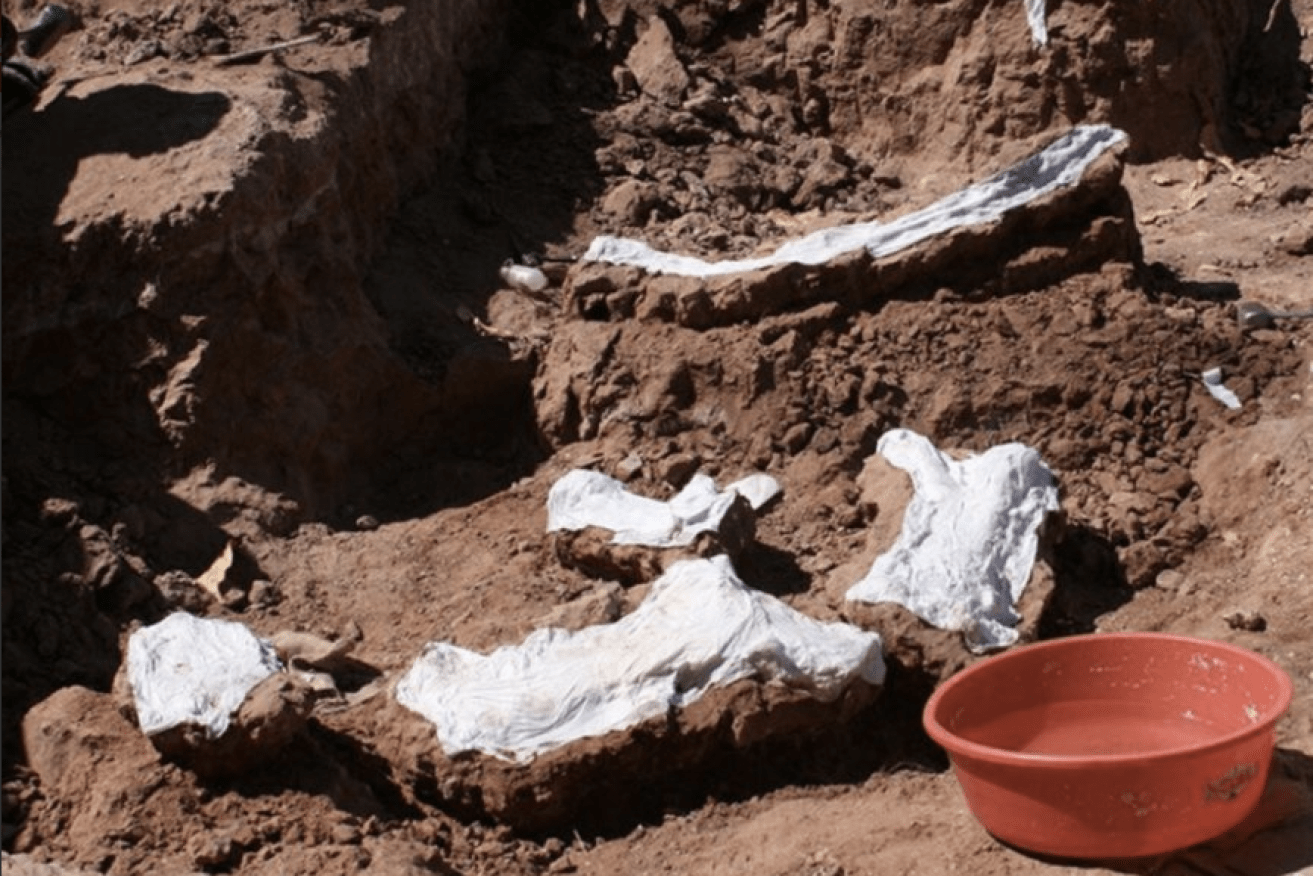Valentine’s Day dinosaur the latest in ‘golden era’ of dinosaur discovery


This dinosaur with heart-shaped tail provides evolutionary clues for the African continent. Photo: Twitter
Before you give up on Valentine’s Day, a dinosaur that wears its “heart” on its tail is providing insight to researchers about how ecosystems evolved on the African continent.
The dinosaur bone excavation took many years and required researchers to suspend themselves on climbing ropes, before the dinosaur, Mnyamawamtuka moyowamkia, a Swahili name for “animal of the Mtuka (with) a heart-shaped tail”, was announced on Thursday.
In addition to the unusual bone structure, the new dinosaur species – which was uncovered from a rocky cliff wall above a riverbed in the western branch of the great East African Rift System of southwest Tanzania – has allowed researchers to piece together how ecosystems evolved in Africa during the Cretaceous period more than 100 million years ago.
The long-necked, heart-shaped tailbone skeleton that measures almost eight metres long and weighs about a tonne, is a relatively small member of the group of dinosaurs, called the Titanosaurs, considered Earth’s largest-ever land animals.
Previously Titanosaurs were identified in South America, such as Argentina’s 37-metre long and 70-tonne Patagotitan dinosaur.
Titanosaurs walked on four-pillar-like legs, and by the time an asteroid impact caused mass extinction, the dinosaur species had reached mind-blowing dimensions.
The discovery of the Valentine’s Day dinosaur is creating a more complete picture of the Titanosaur evolution.
“Although titanosaurs became one of the most successful dinosaur groups before the infamous mass extinction capping the Age of Dinosaurs, their earlier evolutionary history remains obscure,” Ohio University Professor and lead author of the discovery Eric Gorscak said.
“Mnyamawaktuka helps tell those beginnings, especially for their African side of the story.”
Another new dinosaur for 2019 already? Pleased to be able to show my #paleoart of the new Tanzanian sauropod Mnyamawamtuka moyowamkia, named today by Eric Gorscak and Patrick O’Connor. The paper is available here (and is open access): https://t.co/pUR935gMKY pic.twitter.com/X7S0w7GzCw
— Mark Witton (@MarkWitton) February 13, 2019
Colleague and Ohio University Professor of anatomy Patrick O’Conner said the discovery added more detail to the picture of ecosystems on continental Africa during the Cretaceous period.
“The discovery of dinosaurs like Mnyamawamtuka and others we have recently discovered is like doing a four-dimensional connect the dots,” Professor O’Connor said.
The dinosaur discovery is among a large cohort in recent years as more countries open their borders to a new generation of paleontology.
This has not always been the case. From 1984 to 1994, there were about 15 new dinosaur species named per year. But five years ago the estimate was a new discovery every week, according to NBC in the US.
National Geographic has called the modern period the “golden age for dinosaur discoveries”, with about “half of the new dinosaurs species” coming from China.
“Right now is the best time in the history of dinosaur research,” paleontologist Stephen Brusatte told National Geographic last year.
“People are finding more dinosaurs nowadays than ever before: About 50 new species a year, which is incredible. That’s a new species each week, on average,” Dr Brusatte said.
“Not a new bone or skeleton, but a totally new species.”
The fragment of a dinosaur jawbone called the Weewarrasauras pobeni was found in a freak discovery in a bucket of opal rubble near Lightning Ridge, New South Wales in December.

Weewarrasauras was discovered at Lightning Ridge in northern NSW. Photo: University of New England
It is believed the two-legged, plant-eating dinosaur about the size of a kelpie dog roamed the ancient floodplains in the state’s north more than 100 million years ago.

Meet Gordodon. Photo: New Mexico Department of Cultural Affairs
That same year, US scientists released details of a 300-million-year-old species of herbivorous reptile they named ‘Gordodon’ Kraineri, referencing the Spanish word, “gordo”, that literally translates to “fat”.








